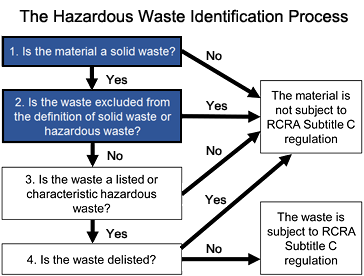All about Reclaim Waste
All about Reclaim Waste
Blog Article
A Biased View of Reclaim Waste
Table of ContentsThe Buzz on Reclaim WasteReclaim Waste for BeginnersReclaim Waste - The FactsAll About Reclaim WasteThe 5-Second Trick For Reclaim Waste
Discover the types, incidents, and kinds of fluid waste. Residential sewer waste describes the waste and items from a residential sewage-disposal tank. This type of waste is created by people in homes, institutions, and other buildings. This only consists of sewage-disposal tanks that have a drainpipe field. The appropriate administration and disposal of residential sewer waste require liquid waste to be transferred to a sewer treatment plant where the correct approaches and devices are related to cleanse and take care of waste.
Business waste commonly includes prospective hazards, such as flammable products or a mixture of fluid and strong waste items, and calls for a more sophisticated and thorough disposal process. The disposal of commercial waste normally entails the purification of waste before transportation to make sure safe and correct disposal. Hazardous waste is developed from byproducts and runoff of commercial processes and production.
This sort of waste can not utilize the exact same sewer monitoring transportation or procedures as septic or commercial liquids. The commercial waste administration process requires the assessment and screening of liquid waste prior to it goes through the disposal procedure (liquid waste removal). Overflow waste is the liquid waste that originates from drainage and excess stormwater in highly populated areas or cities
Overflow waste can create contamination and flooding if not handled correctly. Making sure appropriate waste administration can avoid calamities and lower environmental damage.
Reclaim Waste - Truths
Get in touch with PROS Solutions today to find out regarding our waste monitoring and disposal solutions and the proper ways to care for the liquid waste you create.
(https://reclaimwaste1.wordpress.com/2024/11/12/efficient-liquid-waste-disposal-in-melbourne-reclaim-wastes-expert-solutions/)Do you understand what takes place to your water when you disengage, flush the toilet or drain the washing equipment? No? Well, it's worth recognizing. This so-called 'wastewater' is not only a crucial source but, after treatment, will be released to our land, rivers or the sea. Used water from commodes, showers, baths, cooking area sinks, washings and commercial procedures is known as wastewater.

water made use of to cool machinery or tidy plant and devices). Stormwater, a type of wastewater, is drainage that moves from agricultural and metropolitan areas such as roofings, parks, yards, roads, courses and gutters into stormwater drains, after rain. Stormwater flows neglected directly to local creeks or rivers, at some point reaching the sea.
6 Simple Techniques For Reclaim Waste
In Queensland, the majority of wastewater is dealt with at sewage treatment plants. Wastewater is delivered from residential or commercial websites with a system of sewers and pump terminals, referred to as sewerage reticulation, to a sewage therapy plant. Regional governments construct, maintain and operate most sewer treatment plants. Operators are licensed under the Environmental Management Act 1994 to release cured wastewater at an appropriate ecological criterion right into waterways.
The Department of Natural Resources advises city governments regarding handling, operating and preserving sewerage systems and therapy plants. In unsewered locations, neighborhood governments might call for owners to set up private or family sewage therapy systems to deal with residential wastewater from commodes, cooking areas, restrooms and washings. The Department of Natural Resources authorises making use of house systems when they are confirmed to be efficient.
In some new class, treatment of some stormwater to eliminate clutter, sand and crushed rock has actually begun using gross contaminant traps. Wastewater treatment takes place in 4 phases: Eliminates strong issue.
Utilizes small living organisms knows as micro-organisms to damage down and get rid of remaining dissolved wastes and great particles. Micro-organisms and wastes are incorporated in the sludge.
The 6-Second Trick For Reclaim Waste
Nutrient removal is not readily available at all sewage treatment plants due to the fact that it needs pricey specialised devices. Clear liquid effluent generated after therapy may still consist of disease-causing micro-organisms - industrial wastewater treatment.

This typically indicates index wastewater needs to be treated or impurities gotten rid of before it can be released to rivers. Many wastewater flows into the sewerage system. Under the Act, neighborhood federal governments carry out approvals and permits for environmentally appropriate activities (Periods) entailing wastewater releases that could have a regional impact. The division carries out approvals and permits to Ages entailing wastewater releases that might have a regional or statewide effect.
How Reclaim Waste can Save You Time, Stress, and Money.
Or else, samples are considered lab analysis. Frequently several examinations are needed to develop the levels of each of the various contaminants such as oils, heavy metals and chemicals in water. Tracking provides valid details about water high quality and can validate that licence conditions are being fulfilled. The information obtained through surveillance gives the basis for making water quality decisions.
Report this page